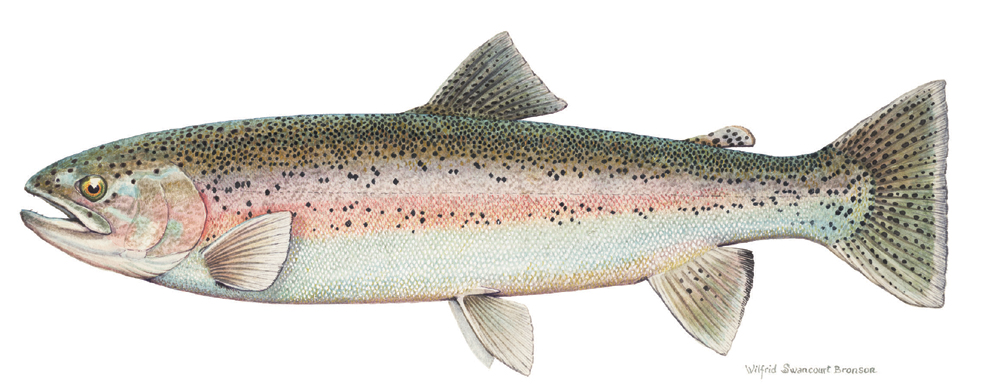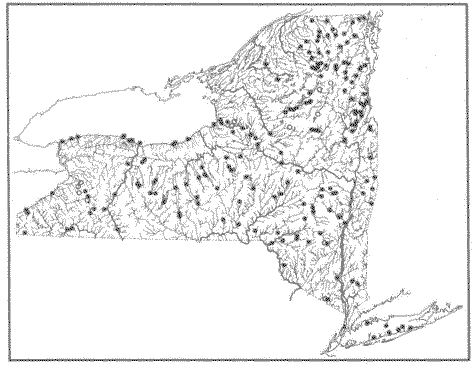
Rainbow Trout or Steelhead (Oncorhynchus mykiss)
Rainbow trout are native to western North America from the Aleutian Islands to northern Mexico, but have been widely introduced to waters throughout North America and the rest of the world. They were first introduced to New York waters in the 1870s from fish originating in California, then reared in a Caledonia, NY hatchery.
The general life cycle of this species requires a stream for spawning and a larger body of water for maturation. Rainbow trout are found in a wide variety of waters throughout the state, ranging from large lakes such as Erie, Ontario, and the Finger Lakes, to large rivers and many smaller tributaries. When living in large bodies of water, rainbow trout often resemble coho and chinook salmon in size and shape, and are referred to as steelhead because of their steel gray, silvery appearance. In New York, adult rainbow trout living in large lakes and reservoirs are often called steelheads because of their springtime tributary spawning runs, which are similar to steelhead spawning runs in Pacific coastal rivers. Only stream-resident rainbow trout show the brilliant red streak on each side, for which this species earns its other frequent common name. All rainbow trout or steelhead have black spots on their head, gill covers, back, sides, and fins.
The spawning behavior of rainbow trout and Atlantic salmon are similar, except that the rainbow trout spawn in the spring. Young fish usually remain in their nursery stream for 2 years (and up to 5 years), then move downstream into larger waters to mature. Rainbow trout usually spawn in their fourth year, and they may spawn several times during their lives. Young trout feed on insects and small crustaceans, then larger rainbow trout feed on fish.

Distribution of rainbow trout in NY state. Dark dots represent loctions where rainbow trout have been collected. White dots represent historic distributions.
An image of the rainbow trout also available for download.